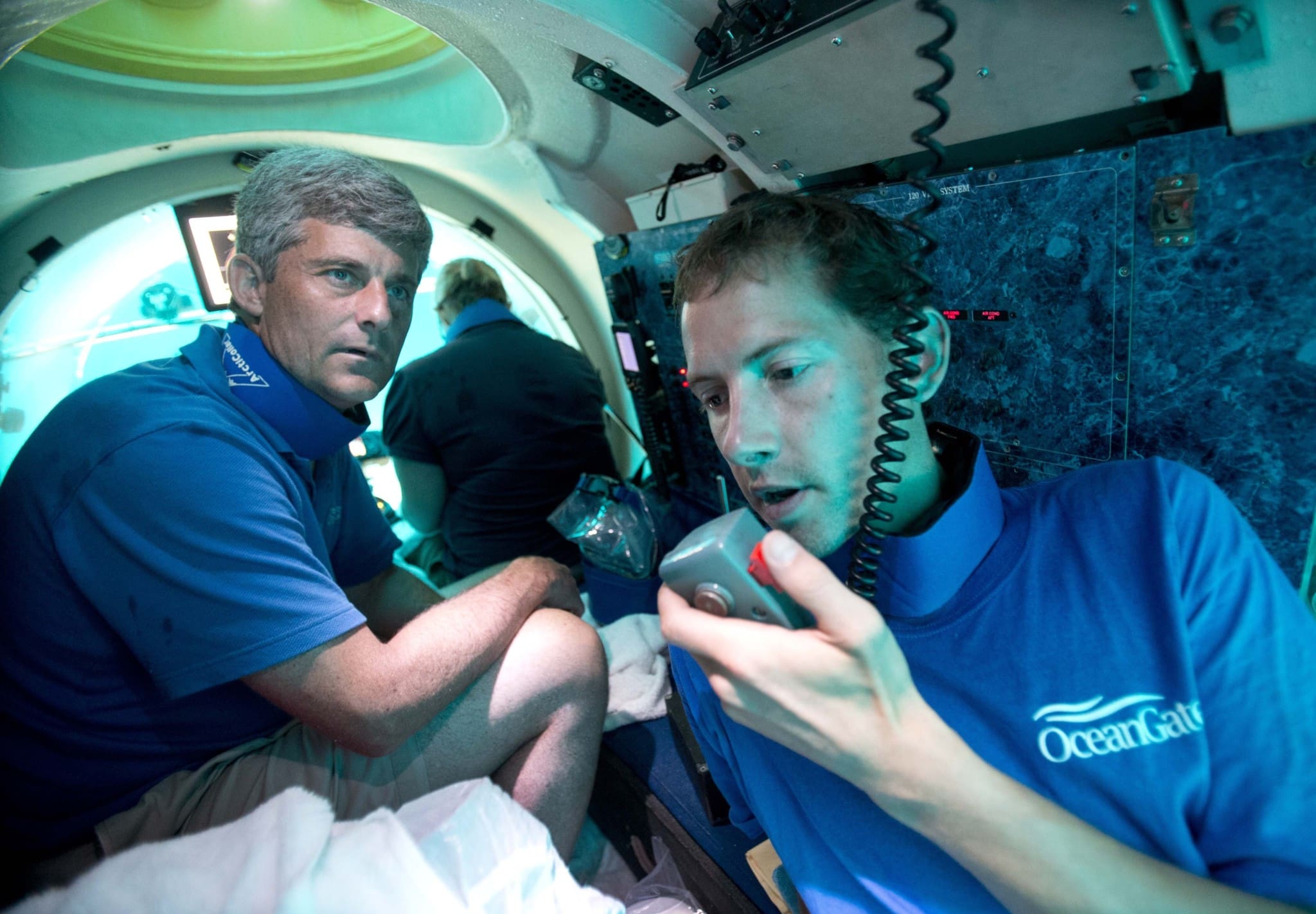Stockton Rush, the CEO of OceanGate, the company operating the missing Titanic tourist submersible, admitted to avoiding hiring experienced “50-year-old White guys” because they aren’t “inspirational.” He instead chose to employ younger, inexperienced staff who could be trained up on the job.
Rush is among five passengers on board Titan, the submersible craft that lost contact with the outside world less than two hours into a dive operation to the Titanic shipwreck located 12,500 feet below sea level on Sunday.
The Titanic ruins are approximately 560 kilometers off the Canadian coast of Newfoundland in the Atlantic Ocean.
A colossal rescue operation is underway to locate the five-person craft, which is understood to have a 96-hour oxygen supply due to expire on Thursday evening at the latest.
In an interview analyzed by U.S. submarine veteran Aaron Amick for Sub Brief, the OceanGate CEO explained how he preferred to employ college graduates who could be trained up over ex-military submarine experts he referred to as “50-year-old White guys.”
“When I started the business, one thing you will find is that there are other sub operators out there but they typically have gentlemen who are ex-military submariners, and you’ll see a whole bunch of 50-year-old White guys,” Stockton said.
“I wanted our team to be younger, to be inspirational. I’m not going to inspire a 16-year-old to go pursue marine technology, but a 25-year-old who is a sub pilot or a platform operator or whatever can be inspirational. So we’ve really tried to get very intelligent, motivated, younger individuals involved because we’re doing things that are completely new.
“We’re taking approaches that are used largely in the aerospace industry, as related to safety and some of the preponderance of checklists, things we do for risk assessments, and things like that that are more aviation related than ocean related. And we can train people to do that. We can train someone to pilot the sub. We use a game controller, so anybody can drive the sub.,” Rush added.
With the rescue operation making global headlines, a number of concerns have come to light regarding OceanGate’s business model and its novel approach to deep-sea tourism.
The company fired one of its “50-year-old White guys,” David Lochridge, back in 2018 after the former director of marine operations raised “numerous issues that posed serious safety concerns” in an inspection report ignored by the company’s directors.
In the consequent lawsuit following his dismissal, Lochridge claimed to have been let go after insisting that the submersible undergo more thorough safety inspections to “prove its integrity.”
In his inspection report, he had identified several areas of concern, including “the lack of non-destructive
testing performed on the hull of the Titan,” something he said was “critical to detect potentially existing flaws in order to ensure a solid and safe product for the safety of the passengers and crew.”
He was reportedly told this would not take place, and that “paying passengers would not be aware, and would not be informed, of this experimental design, the lack of non-destructive testing of the hull, or that hazardous flammable materials were being used within the submersible.”
Another man who had safety concerns over the submersible was Chris Brown, a friend of passenger Hamish Harding, who initially put down a deposit for the doomed voyage before pulling out because he believed OceanGate was “cutting too many corners.”
In an interview with The Sun newspaper, Brown took issue with the fact the submersible’s controls were “based on computer game-style controllers” and that the company had used “old scaffolding poles for the sub’s ballast.”
“Eventually I emailed them and said, ‘I’m no longer able to go on this thing’. I asked for a refund after being less than convinced,” Brown added.





